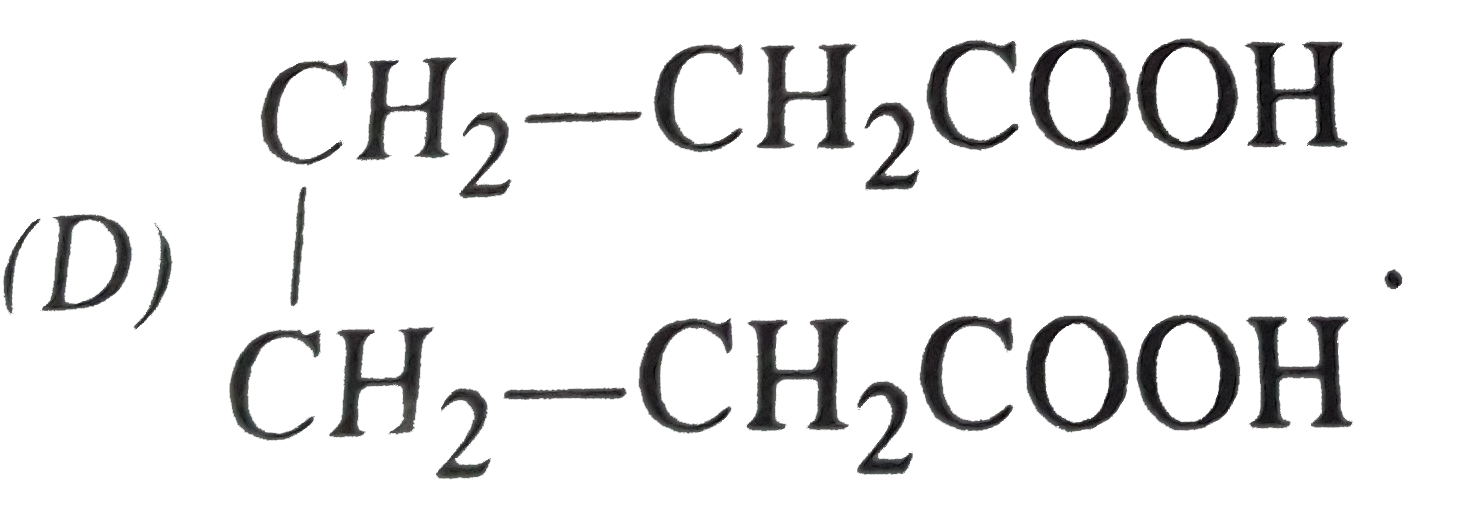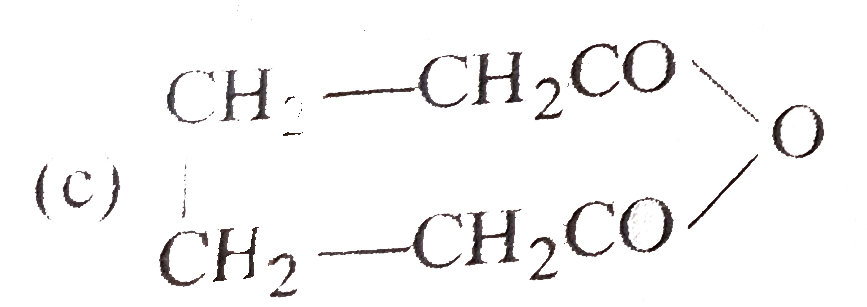Write structure of the product formed when carboxylic acid is heated with dehydrating agent like P2O5
To determine the structure of the product formed when a carboxylic acid is heated with a dehydrating agent like phosphorus pentoxide (P₂O₅), we can follow these steps:
Step 1: Identify the Reactants
We start with a carboxylic acid, which has the general structure:
R−C(=O)−OH
where R represents a hydrocarbon chain or substituent.
Step 2: Understand the Role of the Dehydrating Agent
The dehydrating agent, P₂O₅, will facilitate the removal of water (H₂O) from the carboxylic acid. This means that one hydroxyl group (-OH) from one carboxylic acid and a hydrogen atom (H) from another carboxylic acid will be eliminated.
Step 3: Combine Two Molecules of Carboxylic Acid
When two molecules of the carboxylic acid react, we can represent them as:
1. R−C(=O)−OH (first carboxylic acid)
2. R′−C(=O)−OH (second carboxylic acid, which can be the same or different)
Step 4: Remove Water
Upon heating with P₂O₅, the reaction will lead to the elimination of water:
- The -OH group from one carboxylic acid and the -H from the other will combine to form water (H₂O).
Step 5: Form the Product
The remaining parts of the two carboxylic acids will combine to form an acid anhydride. The structure of the product will be:
R−C(=O)−O−C(=O)−R
This represents an acid anhydride, where the two carbonyl groups (C=O) are linked by an oxygen atom (O).
Final Structure
The final structure of the product (acid anhydride) formed from two moles of carboxylic acid is:
R−C(=O)−O−C(=O)−R
We start with a carboxylic acid, which has the general structure:
R−C(=O)−OH
where R represents a hydrocarbon chain or substituent.
The dehydrating agent, P₂O₅, will facilitate the removal of water (H₂O) from the carboxylic acid. This means that one hydroxyl group (-OH) from one carboxylic acid and a hydrogen atom (H) from another carboxylic acid will be eliminated.
When two molecules of the carboxylic acid react, we can represent them as:
1. R−C(=O)−OH (first carboxylic acid)
2. R′−C(=O)−OH (second carboxylic acid, which can be the same or different)
Upon heating with P₂O₅, the reaction will lead to the elimination of water:
- The -OH group from one carboxylic acid and the -H from the other will combine to form water (H₂O).
The remaining parts of the two carboxylic acids will combine to form an acid anhydride. The structure of the product will be:
R−C(=O)−O−C(=O)−R
This represents an acid anhydride, where the two carbonyl groups (C=O) are linked by an oxygen atom (O).
The final structure of the product (acid anhydride) formed from two moles of carboxylic acid is:
R−C(=O)−O−C(=O)−R
Similar Questions
Knowledge Check
One of the product formed when adipic acid is heated with P2O5 is
A B
B C
C D
D
Which of the following products is formed when adipic acid is heated :
A B
B C
C D
D
Which of the following products is formed when adipic acid is heated ?
A B
B C
C D
D
Write structure of the product when glucose is oxidised with conc. Nitric acid.
View SolutionName the products formed when iron filings are heated with dilute hydrochloric acid.
View SolutionWhat is obtained when carboxylic acid is dehydrated with P2O5?
View SolutionWhat product is formed when acetic acid heated with P2O5
View SolutionWhen adipic acid is heated, the product is .
View Solution
